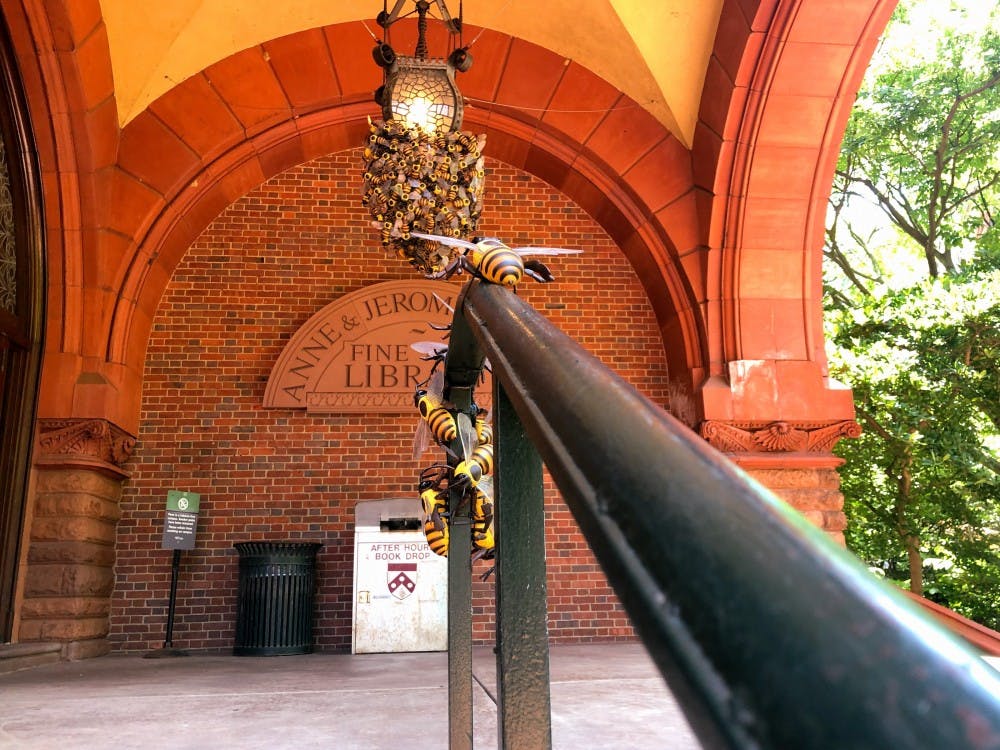Follow the bees. That's the first thing you should know if you decide to visit the brand new project put together by Penn’s School of Design in honor of the 50–year anniversary of landscape architect Ian McHarg’s 1969 ‘landmark book’ Design With Nature. The project is divided into three parts housed in close, yet different buildings on campus—some of which aren’t well–known to the average Penn student. Therefore, the entrance to each exhibit is covered with large, unmissable swarms of plastic bees, making it easy to find whichever one you’re looking for. Bees were specifically chosen as ornaments because they are symbolic in Rome—ornamental bees marked late Renaissance buildings owned by great patrons.
The three exhibits—while unified in their theme of design to combat climate change—are in three separate buildings. “Design With Nature Now: A global survey of ecological design in the 21st century” is located in the Meyerson Galleries at its front entrance on Locust Walk while “Ian McHarg: The House We Live In” can be found at the Kroiz Gallery in the Architectural Archives and Laurel McSherry’s “A Book of Days” is in the Arthur Ross Gallery within the Fisher Fine Arts Library.
All three exhibits are unique and engaging in their own ways; whether it’s the specific theme or the different mediums used to portray their messages. The largest and perhaps most engaging exhibit is “Design With Nature Now,” which studies 25 projects around the world that help combat climate change with their design, more specifically, those pertaining to landscape architecture. The 25 projects are divided into five categories: Big Wilds, Urban Futures, Rising Tides, Fresh Waters, and Toxic Lands. The projects featured are as close as the U.S. and as far away as China and New Zealand, with all of them tackling a specific issue relating to their category through its architectural design.
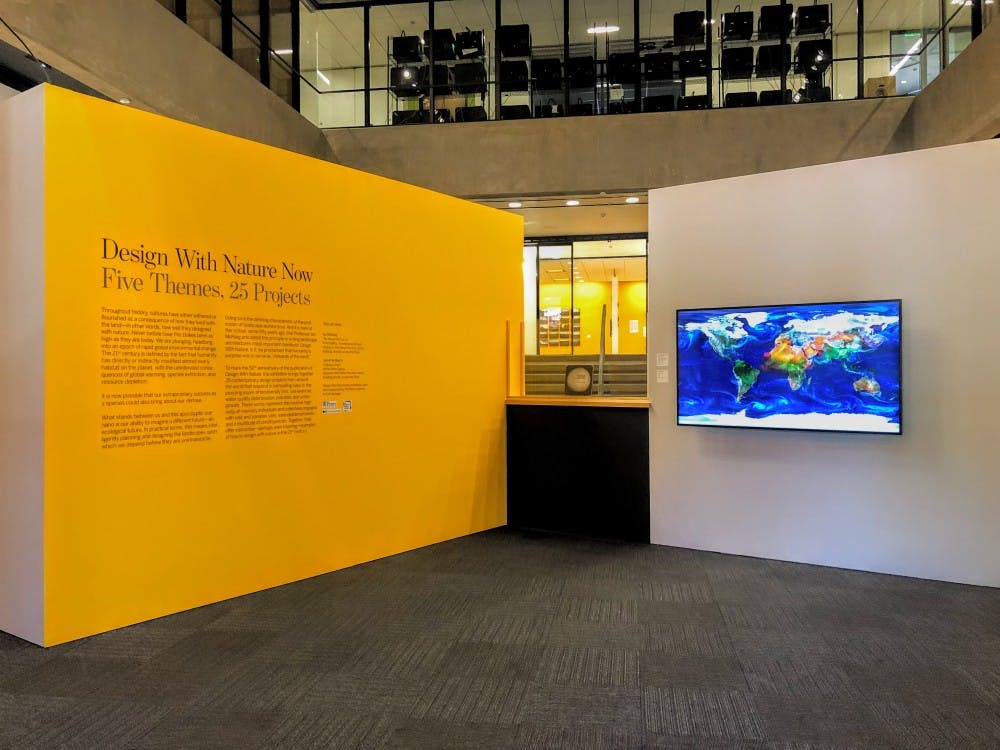
With television screens, 3D models, pictures, and books peppered throughout the brightly colored exhibit, it’s hard not to find something that will catch your attention. The visitor doesn’t need to keep up with every single detail of the exhibit to understand the underlying point: designing new structures mindfully is an essential part of modernizing and there is no need to compromise the integrity of our environment or aesthetics. While different projects all around the globe are featured, a personal highlight was GreenPlan Philadelphia (2006), which “focused on green infrastructure as a way to solve many of the city’s water, sustainability, and quality of life problems,” all of which was inspired by Penn grad Anne Whiston Spirn’s work with the West Philadelphia community in the 1980’s. It was nice seeing which elements of the project were close to campus or to my family’s house, and it made me more mindful of the care taken to plan spaces that I and many other Philadelphians take for granted every day.
The next exhibit was Laurel McSherry’s “A Book of Days,” at the Arthur Ross Gallery, which she worked on using a Fulbright Scholarship during the first half of 2018. It stands in stark contrast with “Design With Nature Now” in terms of color palette (nearly all of the art featured in the gallery is black, white, or grey), but nonetheless manages to utilize different artistic mediums such as video, etchings, and sculpture to make for an engaging experience.
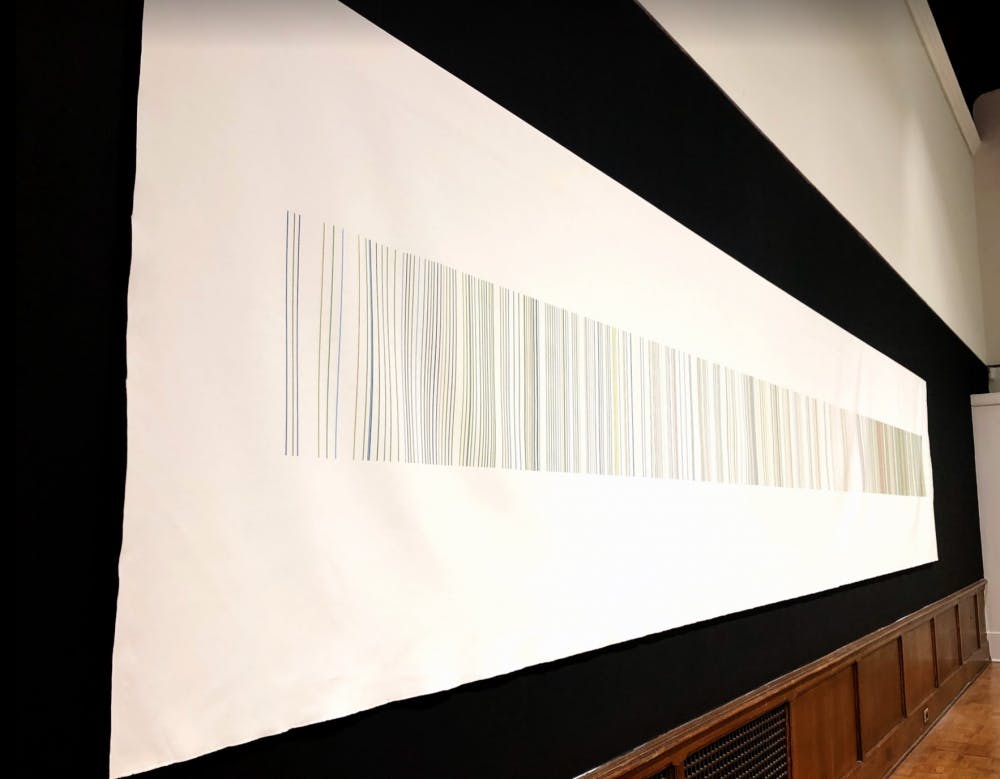
Artist Laurel McSherry connected her project back to the inspiration for the entire series: landscape architect Ian McHarg and his home at the Clyde River Valley in Scotland. Considering his childhood experiences were integral to his book, Design With Nature, this exhibit does the important job of bringing them to life through art.
“A Book of Days” was also inspired by McSherry’s mother, and her time in Glasgow from 1938 to 1942. McSherry found her mother’s diary entries from the time she spent in Glasgow when her mother died in 2014, and realized that she would be in the city at the exact same time as her mother. However, she also realized that all of the entries were on the same date, years apart, which got her thinking about the repetition of calendar dates and how that kind of repetition doesn’t exist with “lived days.”
McSherry compiled her personal experiences and directly channeled them into her art. Some works were inspired by people she met, others by her daily walks in Glasgow. In an interview with the director of the Arthur Ross Gallery, McSherry described her creative process, “I was curious about how my life in the city might change over time, and so each morning I made a drawing of where I walked the day before. I then redrew these maps digitally, which enabled me to regroup the walks in different ways and reflect on them.”
In terms of how her art was connected to the inspiration for these projects—Ian McHarg–McSherry noted the specific rivers that were influential to McHarg’s work and her art: the Clyde in Scotland and the Delaware in the United States. She worked with maps of both of these rivers and developed a curiosity for places of significant change throughout each river. She drew, recorded, displayed, and superimposed all of the changes over time and was able to map the rivers on her own, much like how McHarg did in his work as a landscape architect.
The room housing McSherry’s work is filled with circular etchings, a 20–foot jumble of lines that come together to be one of the most eye–catching elements of the exhibit, and even a television screen playing two different videos simultaneously. It’s not easy to decipher if one is going in blind, but understanding where McSherry is coming from makes each etching, video, and drawing more profound and beautiful.
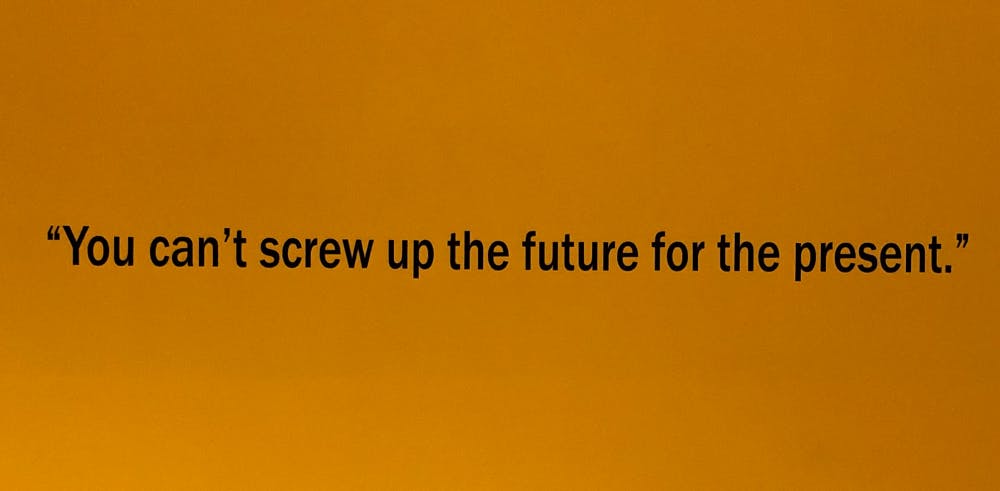
The last element of the three–pronged PennDesign project is “Ian McHarg: The House We Live In,” at the Kroiz Gallery in the Architectural Archives. The exhibit chronicles the foundations of McHarg’s book, Design With Nature, as well as his teaching and environmental activism that played a part in his life and work. More importantly, it solidifies the overarching theme of all three exhibits: to spotlight nature and its gifts while we modernize and innovate.
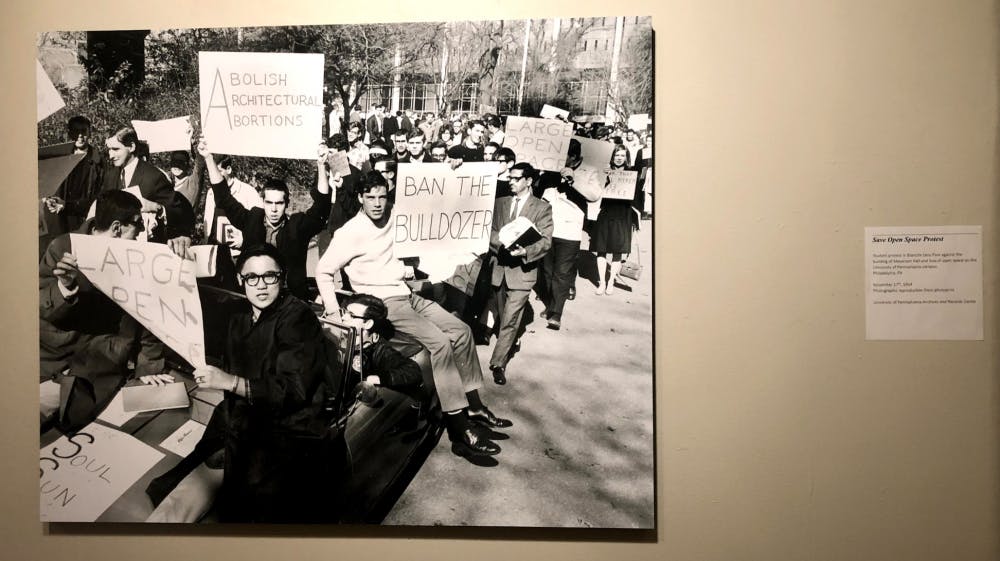
The room housing this specific exhibit is plastered head to toe with vintage maps, 3D models, posters, photographs, advertisements, books, and more, making for an informative and visually stimulating experience. A highlight was an advertisement in the Philadelphia Inquirer for McHarg’s PBS special, “Multiply and Subdue the Earth,” which reads: “Americans are making an inferno of their once glorious country…including the Jersey shore. Tonight on Channel 12…Philadelphia ecologist Ian McHarg [leads] you on a hair-raising tour of the country and offers a hard look at what we’ve done to it.”
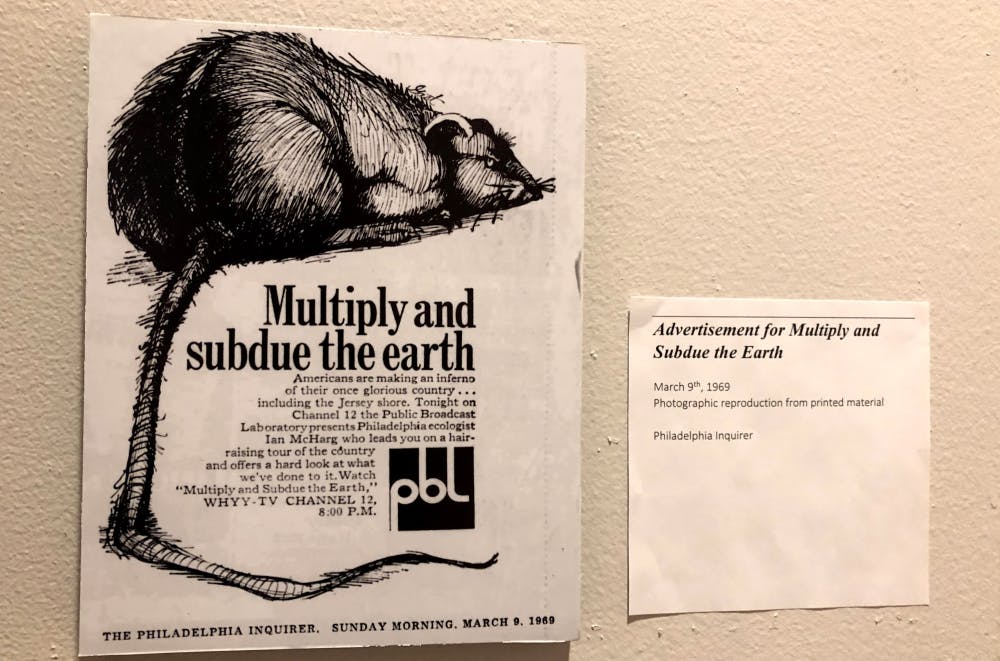
It’s alarming to see how alarmed ecologists like McHarg were all the way in 1969 when it came to the havoc humans wreaked on the environment, which makes it clear that as pretty and informative as it is to look at models of cities and projects that design with nature, that McHarg and many modern landscape architects certainly weren’t and still aren’t just in it for the aesthetics. Design With Nature Now, A Book of Days, and The House We Live In surely are nice to look at, but it is essential that as the visitor digests the information, they are also thinking of ways to make a change and be more mindful of the fact that the beauty highlighted in these exhibits cannot exist if the Earth isn’t thriving in the first place.
All three exhibits are open and free to students and the public until September 15, 2019.
Hours: Tuesday through Friday, 10:00 a.m. to 5:00 p.m.; Saturday 12:00 to 5:00 p.m.
